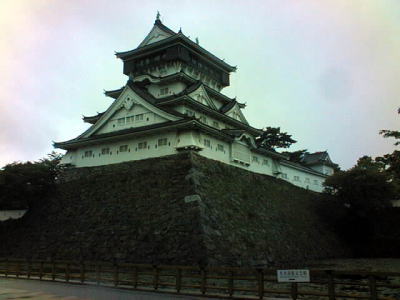In 1600 Japan was divided into two by the eastern army under the command
of Tokugawa Ieyasu and the western army under the command of Ishida Mitsunari.
In July, 1600, when the armies were about to set off for the battle front
at Sekigahara, Gracia, true to her faith, died a martyrfs death (see Footprints
of Gracia Hosokawa for details). With this incident, the unity of
the western army was broken, and two months later, in September of 1600,
the eastern army, to which Hosokawa Tadaoki, Graciafs husband, belonged,
was victorious the victory at Sekigahara, and Japan was unified under Tokugawa
Ieyasu. In 1603, Ieyasu was appointed Shogun, thus inaugurating the
Edo shogunate. In 1601, Hosokawa Tadaoki, in recognition of what
he had done, was made, the lord of a substantial area of Buzen Nakatsu
(now the city of Nakatsu in Oita Prefecture) and the following year, in
1602, a further 399000 koku of Kokura (now Kitakyushu-city in Fukuoka Prefecture)
were added to his domain.
After the battle of Sekigahara, in 1601, Tadaoki Hosokawa moved to Buzen
and on the memorial day of the death of his wife, Gracia, he invited Father
Cespedes to perform a requiem mass, in gratitude for which he rewarded
the priest with gold. At the same time some twenty condemned criminals
were granted amnesties, went to church and were baptized. Tadaoki
allowed missionaries to spread the gospel throughout his domain, and also
allowed them to build missionary centers and chapels. It is said that Tadaokifs
mother often visited the church, listened to the sermons and became a Christian.
